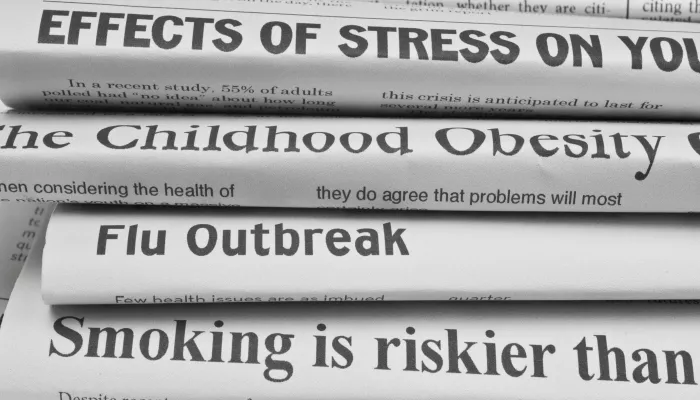While health officials have long suspected the link between obesity and soda consumption, research released today provides the first scientific evidence of the potent role soda and other sugar-sweetened beverages play in fueling California’s expanding girth.
In their landmark study: Bubbling Over: Soda Consumption and Its Link to Obesity in California, researchers from the UCLA Center for Health Policy Research (CHPR) and the California Center for Public Health Advocacy (CCPHA) discovered a strong correlation between soda consumption and weight. Based upon data from more than 40,000 interviews conducted by the California Health Interview Surveys (CHIS), researchers found that adults who drink a soda or more per day are 27 percent more likely to be overweight than those who do not drink sodas, regardless of income or ethnicity.
"The science is clear and conclusive: soda is fueling California’s $41 billion a year obesity epidemic," says CCPHA Executive Director Dr. Harold Goldstein, an author of the research brief. "We drink soda like water. But unlike water, soda serves up a whopping 17 teaspoons of sugar in every 20-ounce serving."
Research shows that over the last 30 years Americans consumed 278 more calories per day even as physical activity levels remained relatively unchanged. One of the biggest changes in diet during that period was the enormous increase in soda consumption, accounting for as much as 43 percent of all new calories. According to Goldstein, that research, combined with this new data on soda consumption, offers conclusive proof of the link between soda and obesity.
And while adult soda consumption is troubling, consumption trends among children paint an even more alarming picture for the future health of California. The study found that 41 percent of young children (2-11 years of age) are drinking at least one soda or sugar-sweetened beverage every day. Adolescents (12-17) represent the biggest consumers, with 62 percent (over 2 million youths) drinking one or more sodas every day – the equivalent of consuming 39 pounds of sugar each year in soda and other sugar-sweetened beverages.
"Soda is cheap, sweet and irresistibly marketed to teens," says the study’s lead author, Dr. Susan H. Babey, a research scientist with the UCLA Center for Health Policy Research. "Not enough teens know about the health and dietary risks of drinking huge quantities of what is essentially liquid sugar while television and advertising tell them it is ‘cool’ to do so."
There were major differences in adult consumption rates by county, the study discovered. Residents of the lowest soda consuming counties of Marin, San Francisco, Yolo and San Mateo drink far less soda than their counterparts in the heaviest drinking counties of Kings, Madera, Kern and Imperial. Nevertheless, the soda/obesity linkage still holds true - those who consume large amounts of soda, regardless of where they live, suffer disproportionally from obesity and overweight.
"If we are serious about tackling the obesity crisis, cutting back soda consumption has to be the top priority," Goldstein asserts. "Parents, communities, businesses and government all have a role to play in helping to reduce consumption. We cannot afford to raise another ‘Pepsi Generation.’"
Funding for the study was provided by The California Endowment, a private statewide health foundation that is a national leader in the childhood obesity prevention movement.
"This research clearly shows the very serious health risks of drinking soda and other sweetened beverages. I hope policymakers will read this report closely and think about what they can do to combat the obesity epidemic that is clearly tied to consuming too many sodas," says Dr. Robert K. Ross, president and CEO of The California Endowment.
Featured Publications
The UCLA Center for Health Policy Research (CHPR) is one of the nation’s leading health policy research centers and the premier source of health policy information for California. UCLA CHPR improves the public’s health through high quality, objective, and evidence-based research and data that informs effective policymaking. UCLA CHPR is the home of the California Health Interview Survey (CHIS) and is part of the UCLA Fielding School of Public Health and affiliated with the UCLA Luskin School of Public Affairs.




